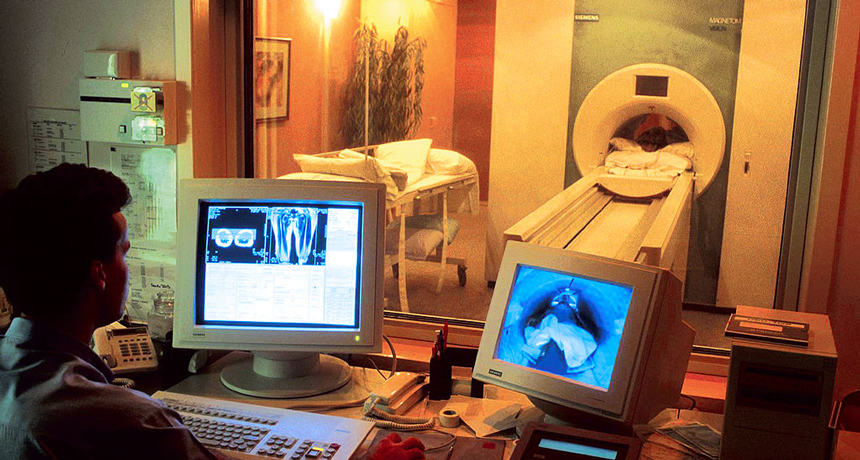Computers refine epilepsy treatment
Excerpt from the September 3, 1966 issue of Science News

COMPUTER ASSIST Computers have become important over the last 50 years for guiding doctors to the source of a patient’s epilepsy. Here, computers record images of the brain of a person undergoing an MRI scan.
CSIRO/Wikimedia Commons (CC BY 3.0)
 Site of seizures may be spotted with computer — Severe epilepsy that does not respond well to drugs may be attacked by computers in combination with surgery.… The computers would register information coming from electrodes implanted in the patient’s brain. By reading the computer, the surgeon might then be able to spot the site of “electrical storms” which cause epileptic seizures. —
Site of seizures may be spotted with computer — Severe epilepsy that does not respond well to drugs may be attacked by computers in combination with surgery.… The computers would register information coming from electrodes implanted in the patient’s brain. By reading the computer, the surgeon might then be able to spot the site of “electrical storms” which cause epileptic seizures. — 





